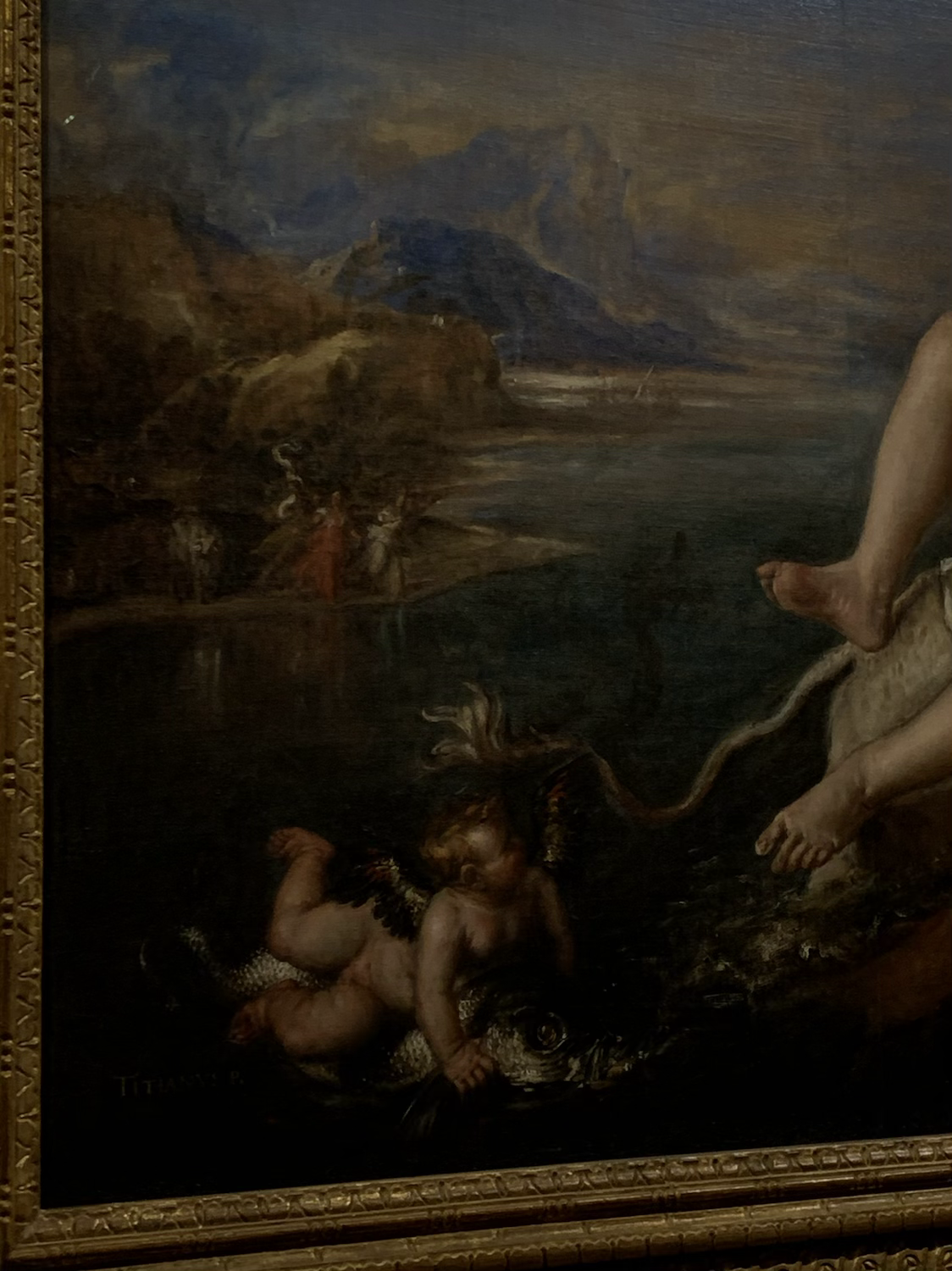Titian; love, desire, and death
- Viola

- Nov 11, 2020
- 4 min read
Introduction
I'm getting to an age now where things that seemed awful before, like galleries, don't scare me so much. And so, when I saw that there was an exhibit in the National Gallery on Titian's interpretations of Ovid's Metamorphoses, I was pretty excited. I am by no means an art connoisseur but I can appreciate a good painting, especially when I am familiar with the stories behind it. And, in all honesty, knowing the stories really helped me as I actually saw how Ovid's words on paper had come to life for one man; Titian (or Tiziano).
Titan
Tiziano Vecelli or Vecellio (c. 1488/90 – 27 August 1576), was an Italian painter during the Renaissance, considered the most important member of the 16th-century Venetian school. Titian was one of the most versatile of Italian painters, equally adept with portraits, landscape backgrounds, and mythological and religious subjects. His painting methods, particularly in the application and use of colour, exercised a profound influence not only on painters of the late Italian Renaissance, but on future generations of Western art.
In 1551, Prince Philip of Spain, the future King Philip II, commissioned Titian to produce a group of paintings showing Classical myths primarily taken from the Roman poet Ovid’s ‘Metamorphoses’. Titian called these works his ‘poesie’ because he considered them to be visual equivalents of poetry.
In Titian's paintings, he tells a story and this allows them to come to life- the expressions of the people jump out at the spectator and he often captures a dramatic moment like a shameful discovery. We see gods and goddesses, yet their faces show very human, and very relatable, emotions: guilt, surprise, shame, desperation, and regret.
Ovid's Metamorphoses
Studying both Latin and Classics, my syllabus is covered with Ovid's name, ranging from his witty and impish Ars Amatoria to his dramatic and fantastical Metamorphoses. Publius Ovidius Naso (20 March 43 BC – 17/18 AD) was a Roman poet who lived during the reign of Augustus and was revered as one of the greatest poets of his time. Regardless, the emperor Augustus banished him to a remote province on the Black Sea, where he remained until his death.
The Metamorphoses consists of a 15-book catalogue written in dactylic hexameter about transformations in Greek and Roman mythology. The word "metamorphoses" is of Greek origin and means "transformations". The books often focus on well known myths such as
the story of Daphne's rape by Apollo and the love of Jupiter with Callisto and Europa, but also on more complex subjects such as the creation of the world.
G. B. Conte has called the poem "a sort of gallery of these various literary genres. In this spirit, Ovid engages creatively with his predecessors, alluding to the full spectrum of classical poetry. Ovid's use of Alexandrian epic, or elegiac couplets, shows his fusion of erotic and psychological style with traditional forms of epic.
In recent years, however, it has become rather controversial due to the violent nature of some of the topics such as rapes. This has led to many students complaining about these texts being on the syllabus, calling them triggering. The Chancellor at Oxford, Chris Patten, has been quoted as saying that history cannot be rewritten to suit contemporary western morals. I personally agree with this quote. When addressing such delicate topics it is of course important to be aware of its emotional impact, but it is from history and mythology that we learn and heal collectively. Ovid's metamorphoses are a work of art and go so far as to question the foundation of the universe and in dissecting human lives and relationships he often intertwines the beauty with the ugliness as so often happens in life. It would be anachronistic to expect Ovid to be aware of the reasonably recent enlightenment of the horrors and injustice of rape. He does not write to condone rape by any means, but it is unfortunately a part of these stories and of life.
Overall review
Onto lighter topics, (and the actual review of the exhibition) I thought that the exhibition was brilliant. There were about 15 paintings, so it did not even take too long! Each painting showed intense emotion, sometimes happy and erotic and full of love, and at other times the complete opposite.

The mythological scenes were beautiful and each character had their own individual personality which came out of the painting; even Bacchus in his cheekiness and Europa in her maiden innocence. The myth of Diana and Actaeon was depicted several times, first with Actaeon walking in on Diana, and later his death. These two paintings had enough similarities that you could tell they were a series, but slight changes in the tone and mood of the painting that made Actaeon's transformation into a stag in the middle, mesmerising.

Since it was the first gallery I had been to in about 5 years, it was a very pleasant experience and I would highly recommend. The realism in Titian's paintings makes them approachable regardless of your art (or Ovidian) knowledge and I think the sheer emotion is a sight everyone should see.
Until next time,
Viola



Comments